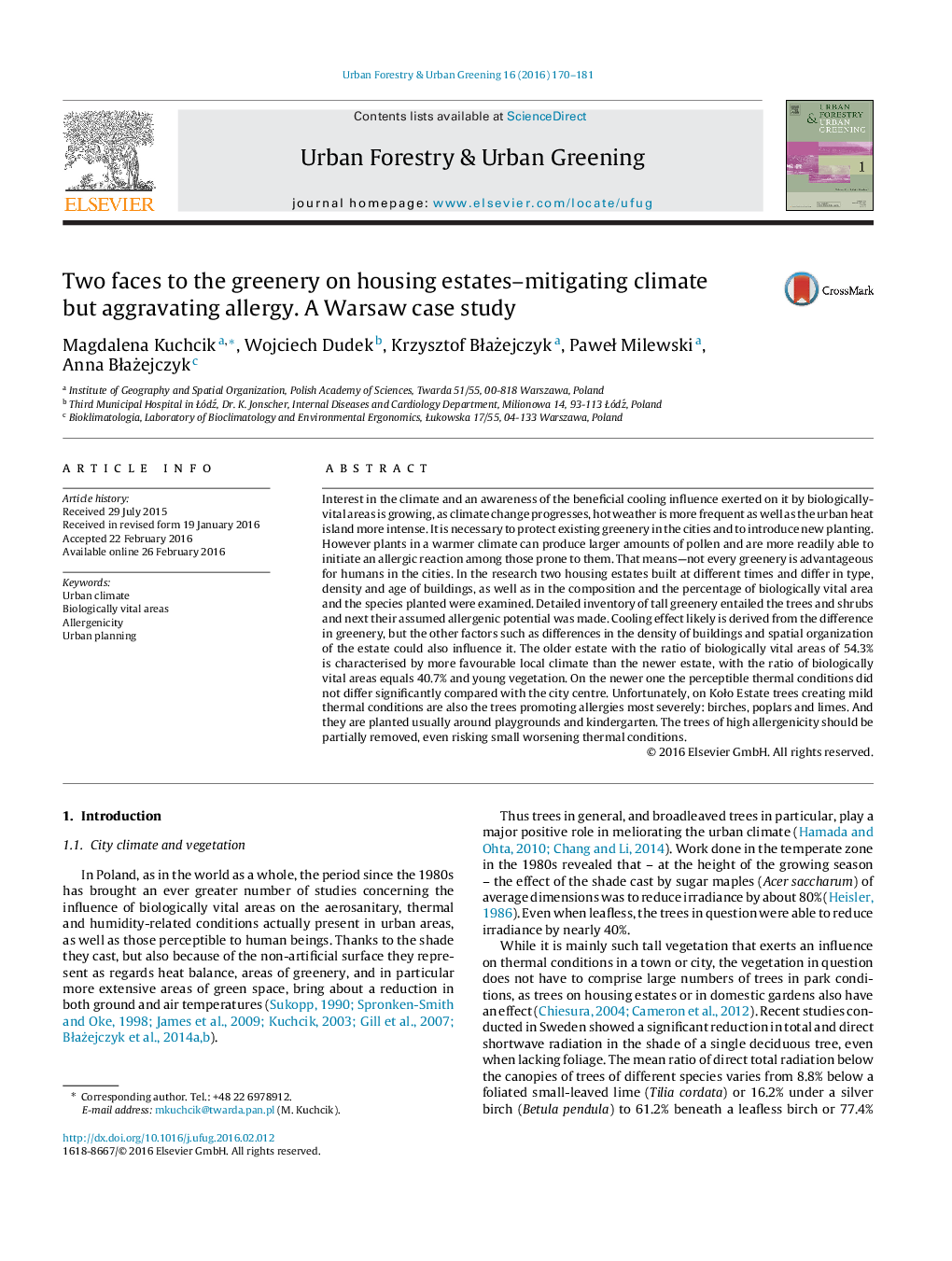| Article ID | Journal | Published Year | Pages | File Type |
|---|---|---|---|---|
| 6549765 | Urban Forestry & Urban Greening | 2016 | 12 Pages |
Abstract
Interest in the climate and an awareness of the beneficial cooling influence exerted on it by biologically-vital areas is growing, as climate change progresses, hot weather is more frequent as well as the urban heat island more intense. It is necessary to protect existing greenery in the cities and to introduce new planting. However plants in a warmer climate can produce larger amounts of pollen and are more readily able to initiate an allergic reaction among those prone to them. That means-not every greenery is advantageous for humans in the cities. In the research two housing estates built at different times and differ in type, density and age of buildings, as well as in the composition and the percentage of biologically vital area and the species planted were examined. Detailed inventory of tall greenery entailed the trees and shrubs and next their assumed allergenic potential was made. Cooling effect likely is derived from the difference in greenery, but the other factors such as differences in the density of buildings and spatial organization of the estate could also influence it. The older estate with the ratio of biologically vital areas of 54.3% is characterised by more favourable local climate than the newer estate, with the ratio of biologically vital areas equals 40.7% and young vegetation. On the newer one the perceptible thermal conditions did not differ significantly compared with the city centre. Unfortunately, on KoÅo Estate trees creating mild thermal conditions are also the trees promoting allergies most severely: birches, poplars and limes. And they are planted usually around playgrounds and kindergarten. The trees of high allergenicity should be partially removed, even risking small worsening thermal conditions.
Related Topics
Life Sciences
Agricultural and Biological Sciences
Forestry
Authors
Magdalena Kuchcik, Wojciech Dudek, Krzysztof BÅażejczyk, PaweÅ Milewski, Anna BÅażejczyk,
